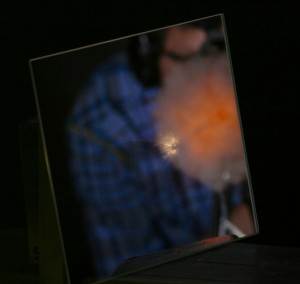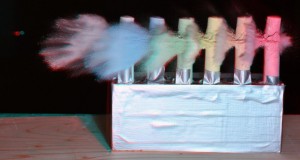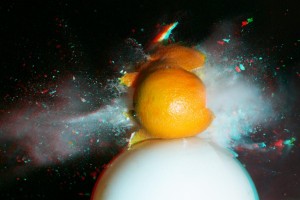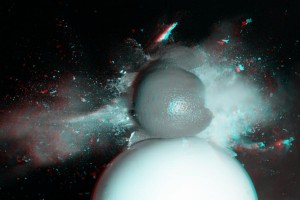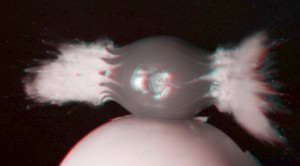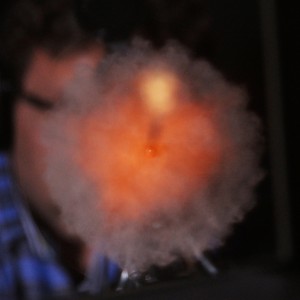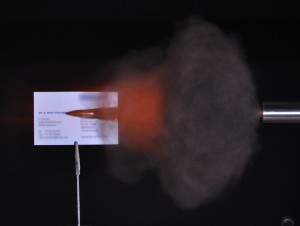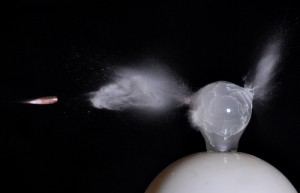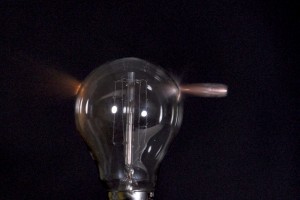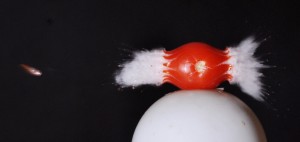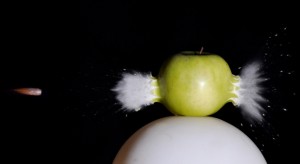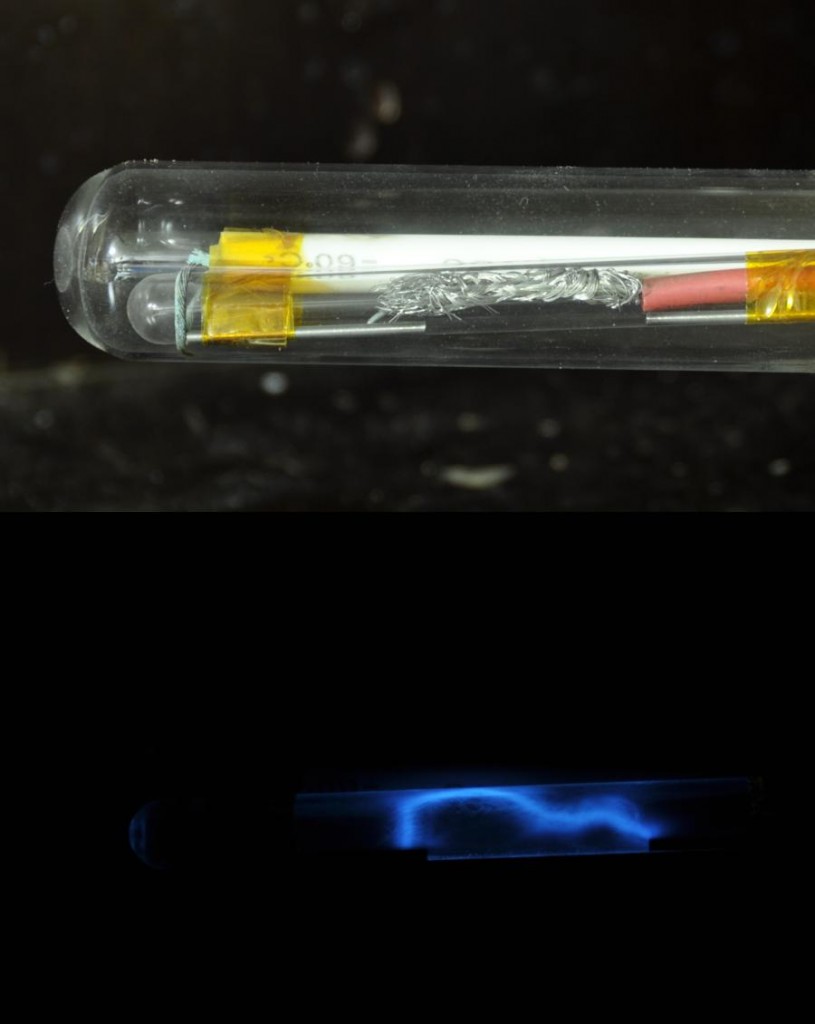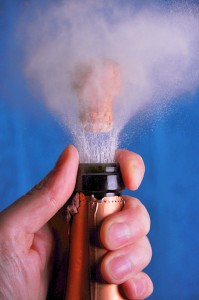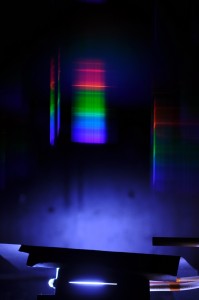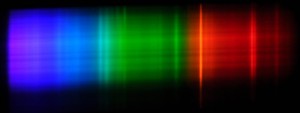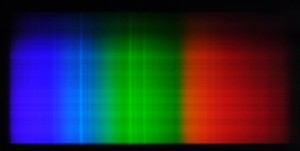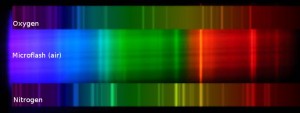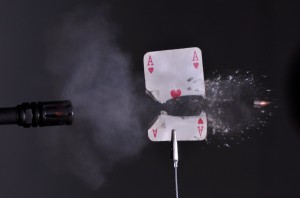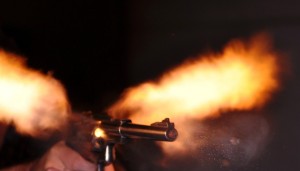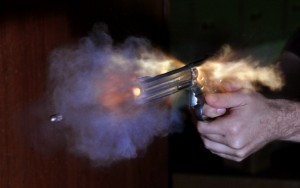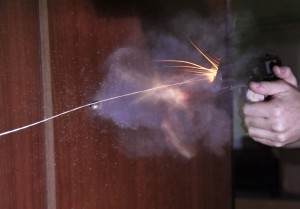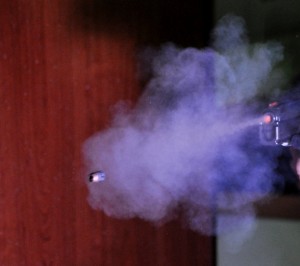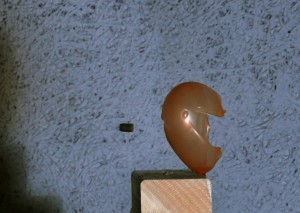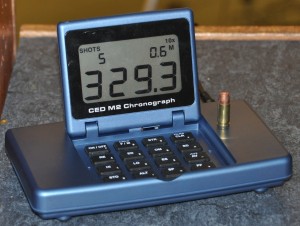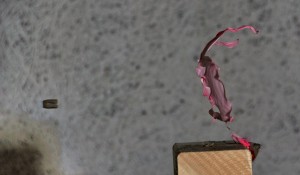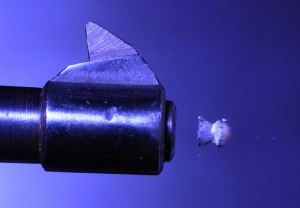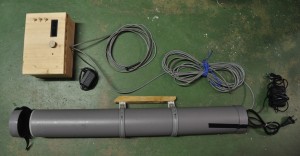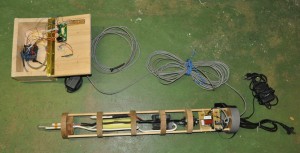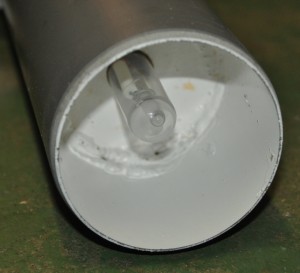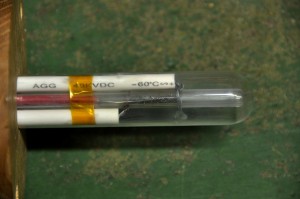A very simple but quite surprising experiment:
- take a sugar cube to a very dark room
- smash it with a hammer (which is not an easy task in the dark!)
- look at the sugar cube and see what happens
You should be able to see a clear blue flash “inside” the sugar cube.
Though the effect is clearly visible, taking a photo is quite hard.
I used a very light sensitive lense (f/1.8) and the camera at the most sensitive mode (ISO 3200) and the blue light was still in the lower part of the histogram:
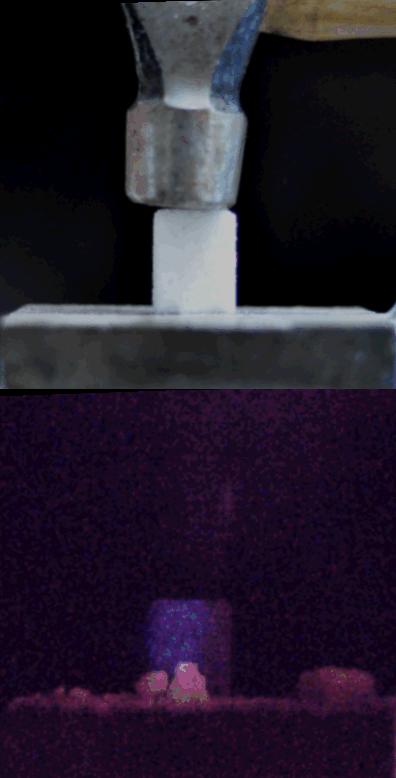
Above: hammer and sugar cube in normal light, below the sugar cube in the dark while being smashed with the shutter open for 3 seconds at f/1.8 and at ISO3200. The room was not perfectly dark, so besides the blue glow, you can still see the vice and the remains of the cube.
The effect is called triboluminescence, an apperently not-so-well understood optical phenomenon that occurs when crystals are rubbed. So when you use more force/energy in hitting the sugar, you should get more light. Therfore shooting a sugar cube may give better photos:
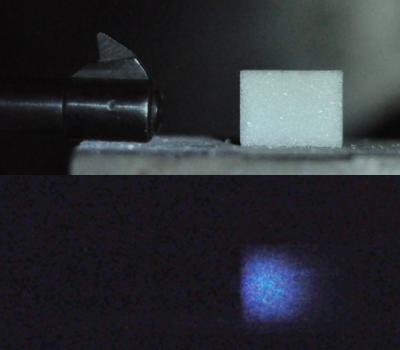
Sugar cube shot from the side with an air pistol, indeed producing more blue light than when crushed with a hammer.
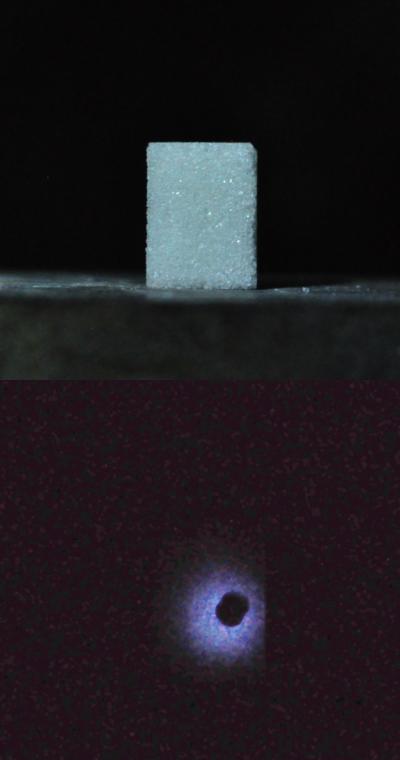
A sugar cube, shot from the direction of the camera. The triboluminescent light actually becomes a high speed flash itself. The dark spot is the pellet hitting the sugar.
I got to this subject, because a similar (though yellow) effect appeared in the mirror we shot with the .308 Winchester. However, when I smashed a piece of mirror with a hammer, no optical effect like in the sugar was visible at all. Some scientific papers seem to suggest that triboluminescence occurs in glass and that it has a Boltzmann like spectrum (similar to a glowing hot object). A more appropriate term may be fractoluminescnce in the case of glass: before it shatters, glass breaks at a very high speed, and the energy dissipated in a very small region of the material at the crack tip heats it up, and thermal photons are emitted (as confirmed by Elisabeth Bouchaud).
